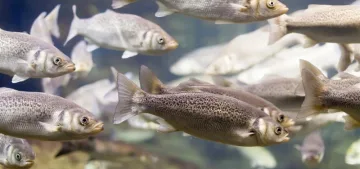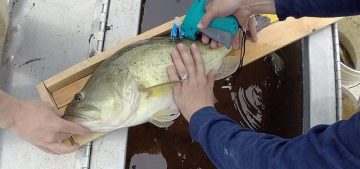Predictive Analytics for Fish Farms: Forecasting Growth, Yield, and Market Trends with Software
In the past, fish farming was often seen as a blend of experience, gut instinct, and hopeful observation. A skilled farmer would walk the pond, watch the fish rise, adjust feeding schedules based on the weather, and trust their knowledge passed down from mentors or years on the job. But as aquaculture continues to evolve into a tech-powered industry, data is quickly becoming the new intuition.
Predictive analytics is now one of the most powerful tools in a fish farmer’s toolkit. With the rise of fish farm management software, aquaculture professionals are no longer just reacting to conditions in their ponds and tanks. They’re forecasting them. They’re using data not just to respond to challenges, but to get ahead of them.
Let’s dive into how predictive analytics is transforming fish farming, enabling producers to forecast growth, improve yield, and anticipate market demand with more accuracy than ever before.
The Rise of Smart Aquaculture
Aquaculture has always had variables: water quality, temperature, oxygen levels, disease risk, feeding rates, and market fluctuations. The challenge is that all these factors are interconnected. A dip in oxygen affects feeding. Overfeeding impacts water quality. Poor water quality leads to disease. And if market prices drop just as your fish are ready to harvest, all your hard work can be lost in profitability.
This is where fish farm management software comes into play. At its core, this software gathers data from sensors, manual inputs, historical records, and market sources. Then it processes that information using predictive models to generate forecasts that inform decision-making.
These aren’t just theoretical numbers. They’re real-time, relevant insights into how your farm is performing now and what’s likely to happen next.
Forecasting Growth with Greater Precision
Every fish farmer wants to know how quickly their stock is growing. Predicting growth rates accurately helps schedule harvests, manage feed costs, and hit supply deadlines.
Traditionally, estimating growth involved occasional netting and measuring a sample of fish, then extrapolating based on averages. But with predictive analytics, growth forecasting becomes a continuous, dynamic process. The software integrates data such as water temperature, species-specific growth curves, feeding rates, and historical performance to predict how fish will grow over days, weeks, and months.
This means better planning. If your fish are likely to reach harvest size two weeks earlier than expected due to favorable conditions, you can start preparing the logistics sooner. If growth is lagging, adjustments to feeding strategies or environmental controls can be made before it’s too late.
Optimizing Yield Before Harvest
Yield forecasting is about more than just estimating how many kilos of fish you’ll produce. It’s about knowing what portion of your stock will be market-ready, what size ranges they’ll fall into, and how consistent the harvest will be.
Fish farm management software doesn’t just track the current biomass. It builds historical profiles for your stock and helps model future outcomes. By analyzing feeding efficiency, mortality trends, and water conditions, the software offers a predictive view of your farm’s productivity.
This is critical for budgeting, labor planning, and meeting supply contracts. If your buyers need a specific size range, predictive analytics can tell you when your fish will be within that window. If you’re seeing early signs of underperformance, you can adjust your strategies to minimize waste and maximize value.
Anticipating Disease and Environmental Risks
One of the biggest threats to yield is disease. Outbreaks can reduce biomass, cause stress-related losses, and destroy market confidence. Predictive analytics helps prevent these issues by recognizing patterns that signal potential problems.
A spike in water temperature, a drop in dissolved oxygen, or unusual feeding behavior can all be early warnings. With the right fish farm management software, these indicators are tracked and compared to historical trends, triggering alerts before a full-blown issue arises.
This allows for proactive responses. Rather than reacting to a disease outbreak after it hits, farmers can implement preventive treatments, adjust stocking densities, or modify feeding regimens in advance.
Reading the Market Before It Moves
Even if everything on the farm runs perfectly, the final value of the harvest depends on the market. This is where predictive analytics expands beyond biology and into economics.
Some fish farm management software includes modules that track historical pricing trends, seasonal demand cycles, and supply chain data. Combined with real-time input from market sources, this allows farmers to make more informed decisions about when to harvest, how to price their product, and what volumes to sell.
For example, if data suggests that prices for tilapia tend to rise in early summer due to holiday demand, a farmer can aim to have mature stock ready for sale during that period. Or if market signals show an upcoming glut, the farmer might hold off or shift to a different product line.
A Smarter Future for Fish Farming
The shift toward predictive analytics isn’t about replacing the farmer. It’s about empowering them. It’s about giving the modern fish farmer better tools to make informed decisions, avoid costly mistakes, and stay competitive in a global market.
With fish farm management software acting as a digital co-pilot, aquaculture is becoming more sustainable, more efficient, and more responsive to both ecological and economic demands.
In the coming years, we’ll likely see this technology grow more sophisticated, integrating weather forecasting, satellite imaging, blockchain traceability, and even real-time consumer data to further close the loop from pond to plate.
Final Thoughts
Fish farming has always been a blend of art and science. Predictive analytics brings that balance into sharper focus. By using data to see into the future of your farm, you move from reacting to leading. From managing uncertainty to shaping it.
So if you’re exploring how to grow your aquaculture operation, reduce risk, and maximize profitability, investing in a smart, data-driven approach is no longer a luxury. It’s becoming a necessity. And it starts with the right fish farm management software.









Add comment